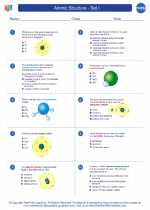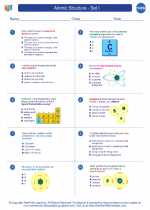Properties of Radon:
- Atomic Number: 86
- Atomic Symbol: Rn
- Melting Point: -71°C
- Boiling Point: -61.8°C
- Density: 9.73 g/L
- Radioactive Half-life: 3.8 days
Health Effects:
Radon is the second leading cause of lung cancer after smoking. When inhaled, it decays into radioactive particles that can damage the DNA in the cells lining the lungs, leading to an increased risk of lung cancer. Prolonged exposure to elevated levels of radon can be detrimental to human health.
Occurrence and Exposure:
Radon is present in varying amounts in soil, water, and air. It can seep into buildings through cracks in the foundation, gaps around pipes, sump pumps, and other openings. Consequently, indoor radon concentrations can accumulate to levels that pose a health risk to occupants.
Study Guide for Radon:
- What is the atomic number of radon?
- What are the health effects of radon exposure?
- How does radon enter buildings?
- What are the properties of radon?
- How does radon contribute to lung cancer risk?
Understanding the properties, health effects, and occurrence of radon is crucial for addressing the associated health risks and implementing measures to mitigate its concentration in indoor environments.
.◂Chemistry Worksheets and Study Guides High School. Atomic Structure - Set I

 Worksheet/Answer key
Worksheet/Answer key
 Worksheet/Answer key
Worksheet/Answer key
